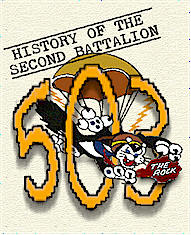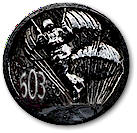|
 |
Army Regulations require that units,
down to and including companies and batteries, keep journals of
their activities. If complete journals were kept, then all
that would have to
be done to find out what each company did, and when they did it, would be to read
their journal.
The problem is that many units did not comply with this
regulation, or if they did, the journals have been lost. Even in
compliance, many journals were not thorough � actions went entirely unrecorded,
were incompletely recorded and sometimes not even factually recorded. |
|
Methods varied within the various
companies for keeping the journals. In some the first sergeants and the
company clerk were the recorders. In others an officer was assigned to do
the work. In at least one company these over lapped as regards to the action
on Corregidor. That was in "E" Company, where the first sergeant kept a
journal. Soon after the Company returned to Mindoro, Hudson Hill, "E"
Company's commander, assigned 1st Lt. Donald Abbott to write up the
company's journal. Abbott did this before he left to command "A" Company,
and, by all verifiable accounts, his journals are the most accurate and can
be relied upon. It is regrettable that some of the authors of recent
books did not consult this journal before they wrote of "E" Company�s
actions on Corregidor.
Don Abbott had been in "A" Company, 504th Parachute Infantry, and
came to Australia with the 503d on the
Poelau Laut. At the time,
the 503d included men of the 501st and 504th. John Lindgren arrived from
San Francisco via Brisbane in October 1943 with the first large group of
replacements after the regiment returned from Nadzab. These replacements
comprised about three hundred and fifty men and a small group of officers.
Bill Calhoun arrived in the third replacement group and was assigned to "F"
Company as of 3 January 1944. Lindgren was assigned to "E" Company where
Abbott was now assigned. Other groups of replacements were to follow during
the next few months. Many of the officers and men of the 501stt
Parachute Battalion were being rotated home, and the main job ahead for Lt.
Col. George M. Jones was to unite the rivalries of four separate units into
a single regiment.
The files of the 503d, those of them
remaining to be found, are in the National Archives at Suitland, Maryland,
and the Military History Institute at Carlisle Barracks, Pennsylvania. They
are not consolidated, and there have been several solid weeks of research,
stretching over numerous visits, just in uncovering the journals for all the
companies in the 2d Battalion, "A" Company, and the 161st Parachute
Engineer Company. "Bless 'Em All" could not have been written without the
exhaustive dedication of John Lindgren and Don Abbott.
When the 503d was in action there were
long periods when it was very difficult to keep the morning reports. The
tactical mission came first, and it took all of the units meagre resources
to accomplish their primary mission. The journal was largely kept by referring to the
morning reports and memory. Consequently much of the recording of events
was from memory, or was simply incomplete. For example:-
* "F"
Company�s actions on Noemfoor, for instance, are poorly recorded, because
the Company was committed in the heavy jungle interior for weeks.
*On
Corregidor, the names of the first two men killed, 16 February, were not
even recorded.
*
Also erroneously recorded that day was the 1st platoon�s attack
on Battery Wheeler. It was not so much an attack, but an effort to get
Sergeant Freihoff and Pfc. Huff out of the trap there.
*
The only report of the company�s greatest moment of glory, their defense
of Way Hill and Battery Hearn magazine throughout the night of 18/19
February, is noted in the brief understatement, �Fighting was bitter during the
night as the enemy attacked time and time again."
*"F" Company landed on Negros 7 April. It was not
until about 29 April that the first sergeants and company clerks were
called back to the RCT headquarters to write up their morning reports.
This was no one�s fault. The fighting on Negros occurred during the first
two months. As a consequence, no details of the actions in which twelve
"F" Company men died during this time can be found in the reports.
Whilst administrative actions at
Company level were very slow due to combat, at higher levels the journals
could be more accurately maintained. The 2d Battalion journal was excellent
throughout the operations. 1st Lt. Thomas P. McNerney, S-1, kept
an excellent journal covering the company and the headquarters during the
Noemfoor operation, Leyte, Mindoro, and Corregidor. After Corregidor, McNerney
was assigned to command a company, but the journal was well kept on Negros.
"D" Company always kept a good journal throughout the operations. Every
platoon in the company performed magnificently and the company performed as
a unit; whereas, actions before had been as individual platoons.
During the passing of the years, there
has been a continuing project to compile the history of the 2nd Bn based
upon the journals at both company and battalion levels, the morning
reports, casualty lists, private diaries and personal recollections. There
has been much re-examination and reflection, for to present the journals
alone in their raw state would be a disservice to the heritage of the 503d,
and to history. The comments and commentaries which follow are written
and compiled predominantly by William T. Calhoun, one of the three young men
who came to the 503d as Lieutenants, and in one manner or another, never
left. Together with John D. Lindgren and Donald E. Abbott, Calhoun has been,
and still is, working on this history, and though their work will
cease upon their passing, the work on "Bless 'Em All" will
continue.
|

